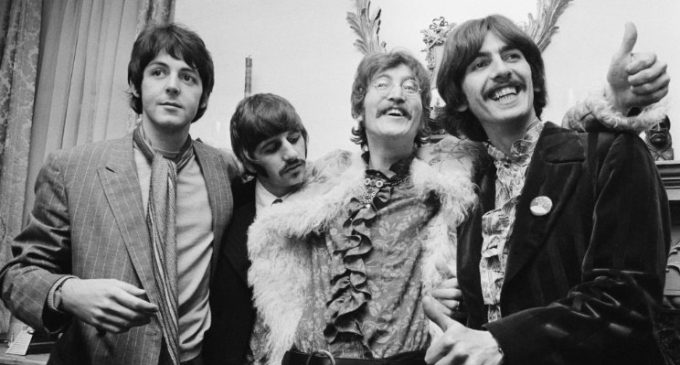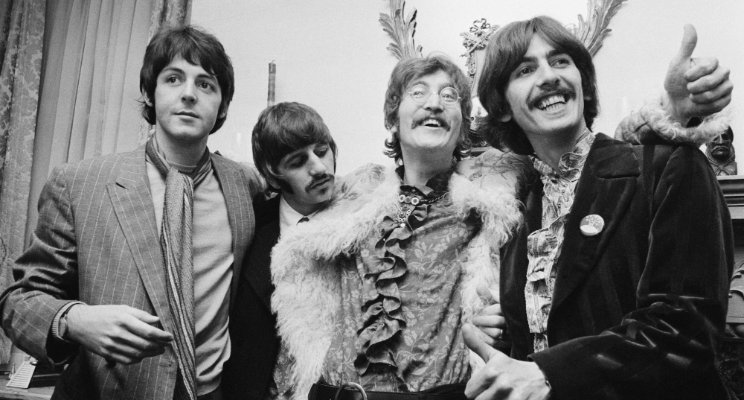How the Beatles helped invent the CAT scan. Or, what intangible investment means in the modern economy.

In the mid-1960s the Beatles were not just a cultural force, they were an economic one. At their peak, their records and ticket sales were generating $650 a second in today’s money. The dollar receipts from their overseas tours are even credited with temporarily saving the British government from a currency crisis.
One of the beneficiaries of the rise of the Beatles to stardom was their record company, Parlophone, which since the 1930s had been owned by Electric & Musical Industries Limited, better known as EMI (and later to be the subject of a song themselves by the Sex Pistols). By 1967, 30 percent of EMI’s profits were coming just from Beatles sales.
As their expanded name suggests, EMI wasn’t only a record label. In the 1960s the company was as interesting for its electrical activities as for its musical ones. In 1959 it had launched a commercial computer called the EMIDEC 1100; it also made color TV cameras, recording equipment, guided missiles, and kettles.
The piles of cash brought in by Beatlemania helped create a culture of investment at EMI. One of the things they invested in was medical equipment research. Godfrey Hounsfield, the researcher behind the EMIDEC, began work on the first commercially viable medical scanner. As the project developed, he was significantly supported by the UK government, which provided over £600,000 of support or £7 million at 2016 prices. Over four years, he and his team invented and built the first computed tomography scanner (CT or “CAT scanner”—the A stands for “axial”).
This was a remarkable feat of science and engineering. For the first time, it allowed doctors to make accurate, 3D representations of patients’ soft tissues. This was a real medical breakthrough, transforming everything from brain surgery to cancer treatment. Hounsfi was piled with honors: he received a Nobel prize and a knighthood and was made a Fellow of the Royal Society. But from a commercial point of view, it was something of a failure for EMI.
EMI took out patents on the underlying technologies and invested to build the business, creating partnerships with hospitals to work out how CT could help doctors and building a sales force to sell the scanners to American hospitals. But as the 1970s rolled on, it became clear that other companies were going to dominate the CT market. General Electric (GE) and then Siemens licensed some of the technologies from EMI and quickly built large CT scanning businesses. By 1976 EMI decided to get out of the CT scanning business entirely.
It may not be obvious to someone listening to a Beatles song or having a CT scan, but this story is all about intangible investments. And it neatly illustrates some of the things that make intangible investments of various sorts different from physical, tangible investments.
First of all, consider the Beatles catalogue, the vast profitability of which helped EMI back the CT scanner. Music rights are a type of intangible asset. Once you own them, you can press as many singles as you like at a pretty low cost (nowadays, in the age of digital music, that cost has fallen close to zero).
This isn’t true of a physical asset like a factory or a shop or a telephone line: once these assets reach their capacity, you need to invest in new ones. But intangibles do not have to obey the same set of physical laws: they can generally be used again and again. Let’s call this characteristic of intangibles scalability.
Next, consider what happened when EMI decided to get out of the CT scanner business. They’d made a lot of intangible investments: most obviously the R&D to design the scanner itself, but also the time they put into working with clinicians on how to use the scanners; on building a business unit; and establishing a market presence in the United States.
On some of this EMI got a return—they received license fees from their patents from GE and Siemens. But a lot of it looks like it was written off. It’s hard to recoup the money spent on setting up a sales force or on building an unsuccessful business unit or brand. Physical assets are often much easier to sell, even if they are quite specialized. Let’s call this characteristic of intangibles sunkenness.
The role of GE and Siemens in developing the CT scanner illustrates another distinctive feature of intangibles: rather unfairly, the person or business making the investment in them doesn’t always reap the rewards. The dazzling R&D that Godfrey Hounsfield carried out, the design work with hospitals, and the hard slog of making early sales yielded a small return to EMI, but a big new market for its competitors. This simply isn’t the case with most tangible investments. GE obviously couldn’t break into EMI’s factories to produce their own CT scanners—there are locks and alarms and laws to stop that sort of thing. But they did manage to make use of EMI’s intangible investments, at a relatively low cost. In the language of economics, you could say that it is sometimes hard for the original investor to appropriate the benefits of intangible investment, or, to put it another way, that intangibles often have spillovers beyond the company making the investment.
Finally, investments in intangibles become dramatically more valuable when you combine them. EMI’s central R&D lab was a melting pot of research on computing, imaging, and electrical engineering; bringing these different types of knowledge together with the clinical expertise of the doctors at Atkinson Morley Hospital, where the first scanners were trialed, helped create a genuine breakthrough.
But it is not just ideas derived from R&D that can lead to these unexpected benefits when you combine them. The eventual success of GE’s CT scanner relied on bringing together the technological investment in the device itself with GE’s brand and customer relationships. And, of course, the success of the Beatles themselves relied on the bringing together of new musical ideas (from Elvis to Ravi Shankar) and Parlophone’s own intangibles: their ability to promote and market the band. All of these are examples of the synergies between intangibles—synergies that are often large in size and hard to predict.
Until very recently, the investments that national statistical offices measured were all tangible assets. These investments represented the modern age in all its industrial glory (in 2015 in the UK, for example, businesses invested £78bn in new buildings; £60bn in IT, plant, and machinery; and £17bn in vehicles). The basic principle was that investment was about physical goods.
There are two big differences with intangible assets. First, most measurement conventions ignore them. There are some good reasons for this, but as intangibles have become more important, it means we are now trying to measure capitalism without counting all the capital. Second, the basic economic properties of intangibles make an intangible-rich economy behave differently from a tangible-rich one.
Now, there is nothing inherently unusual or interesting from an economic point of view about a change in the types of things businesses invest in. Indeed, nothing could be more normal: the capital stock of the economy is always changing. Railways replaced canals, the automobile replaced the horse and cart, computers replaced typewriters, and, at a more granular level, businesses retool and change their mix of investments all the time. But, we think that there is something fundamentally different about intangible investment, and that understanding the steady move to intangible investment helps us understand some of the key issues facing us today: innovation and growth, inequality, the role of management, and financial and policy reform.
In fact, once we take into account the changing nature of capital in the modern economy, a lot of puzzling things start to make sense.
(Image: John Downing, Getty Images)




There are no comments at the moment, do you want to add one?
Write a comment